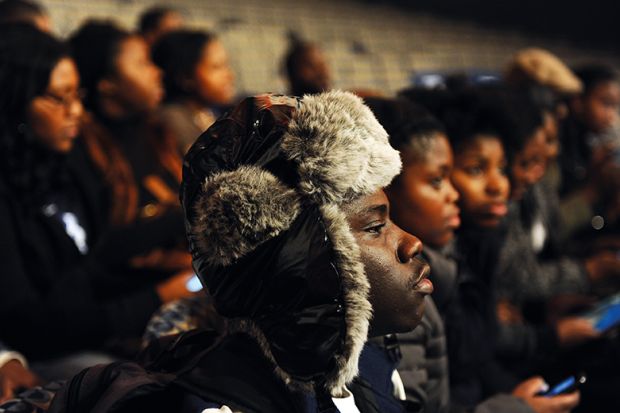Here is a shocking fact: roughly one in 1,000 black men in the US will die at the hands of police, making it the leading cause of death for young African American men.
The statistic, put forward by a recent study in the journal PNAS, presents a pitiful truth: that far from the “post-racial” era announced by giddy commentators when Barack Obama was appointed president, the US remains riven by racial inequalities.
It is a point made forcefully in the former First Lady Michelle Obama’s autobiography, published last year, in which she talks at length about the role of education in her own elevation from a working-class household in the south side of Chicago to the White House. Of course, there is nothing particularly unique to US society about that – although there is a growing debate about how the system is and is not delivering on its goal to drive social mobility.
What are unique, however, are the 100 or so historically black colleges and universities established in the era of segregation to serve the African American community, and continuing in that mission today.
In her memoir, Obama notes that even such targeted provision escaped the attention of a bright and motivated, but socially unconnected black schoolgirl such as her. The daughter of a stay-at-home mother and a father who tended boilers for the city authorities, it was not until she met fellow pupils whose parents were lawyers or doctors that she became aware of them.
“They’d been on ski vacations and trips that required passports. They talked about things that were foreign to me, like summer internships and historically black colleges,” she writes.
This is a reminder that even within minority or marginalised communities there is a wide spectrum of experience and opportunity (although it is worth saying that Obama’s childhood is anything but a sob story, with an education that led to Princeton and Harvard universities).
When opportunity is restricted, it is sometimes a result of financial deprivation or limitations, but it is just as often about the absence of familial experience and connections. This persists after enrolment in higher education, when students arrive with very different levels of social capital.
Universities that address this reality are invaluable, and in our features pages this week we take a closer look at the lessons that others can learn from the HBCUs.
It may be regrettable that such delineations are needed in 2019, but it is undeniable that they are.
One recent study on the motivations of students who applied to HBCUs, published in the Journal of Student Affairs Research and Practice, confirmed that feelings of isolation and alienation as a black student in a predominantly white environment remained a significant factor.
There is evidence that division persists at an institutional level too.
For example, a recent paper in the Journal of Financial Economics found that both issuing and trading bonds is harder and more expensive for historically black institutions than for comparable “mainstream” universities – even when credit worthiness is identical.
The effect, reflected in the higher underwriting fees (which in turn reflect the higher costs of finding willing buyers), is three times larger in the deep south, “where racial animus remains most severe”.
In her memoir, Obama talks about the time that social change takes and its circuitous path.
She writes about her realisation that the increasing representation of successful black professionals could provoke a backlash, which may be contributing to the current state of politics.
“We lived with an awareness that we ourselves were a provocation,” she says.
“As minorities across the country were gradually beginning to take on more significant roles in politics, business and entertainment, our family had become the most prominent example.
“Our presence in the White House had been celebrated by millions of Americans, but it also contributed to a reactionary sense of fear and resentment among others. The hatred was old and deep, and as dangerous as ever.”
A time may come when there is no longer a need for the historic mission of the HBCUs – but not yet.
Register to continue
Why register?
- Registration is free and only takes a moment
- Once registered, you can read 3 articles a month
- Sign up for our newsletter
Subscribe
Or subscribe for unlimited access to:
- Unlimited access to news, views, insights & reviews
- Digital editions
- Digital access to THE’s university and college rankings analysis
Already registered or a current subscriber? Login




